Inverted Microstrip Gap Waveguide Coplanar EBG Filter for Antenna Applications
Abstract
:1. Introduction
2. Filter Characteristics and Design
2.1. Artificial Magnetic Surface
2.2. Resonator Filtering Characteristics and Periodic EBG
2.3. Truncated EBG Version and Filter Design
3. Results and Discussion
3.1. Design and Key Parameters: Short-Circuit Element
3.2. Manufacture and Measurements
3.3. Discussion
4. Conclusions
Funding
Acknowledgments
Conflicts of Interest
References
- Viswanathan, H.; Mogensen, P.E. Communications in the 6G Era. IEEE Access 2020, 8, 57063–57074. [Google Scholar] [CrossRef]
- Inclan-Sanchez, L.; Vazquez-Roy, J.; Rajo-Iglesias, E. High Isolation Proximity Coupled Multilayer Patch Antenna for Dual-Frequency Operation. IEEE Trans. Antennas Propag. 2008, 56, 1180–1183. [Google Scholar] [CrossRef]
- Islam, S.; Zada, M.; Yoo, H. Low-Pass Filter Based Integrated 5G Smartphone Antenna for Sub-6-GHz and mm-Wave Bands. IEEE Trans. Antennas Propag. 2021, 69, 5424–5436. [Google Scholar] [CrossRef]
- Nwajana, A.O.; Obi, E.R. A Review on SIW and Its Applications to Microwave Components. Electronics 2022, 11, 1160. [Google Scholar] [CrossRef]
- Rajo-Iglesias, E.; Ferrando-Rocher, M.; Zaman, A.U. Gap Waveguide Technology for Millimeter-Wave Antenna Systems. IEEE Commun. Mag. 2018, 56, 14–20. [Google Scholar] [CrossRef]
- Pucci, E.; Rajo-Iglesias, E.; Vázquez-Roy, J.; Kildal, P. Planar Dual-Mode Horn Array with Corporate-Feed Network in Inverted Microstrip Gap Waveguide. IEEE Trans. Antennas Propag. 2014, 62, 3534–3542. [Google Scholar] [CrossRef]
- Liu, J.; Vosoogh, A.; Zaman, A.U.; Yang, J. Design and Fabrication of a High-Gain 60-GHz Cavity-Backed Slot Antenna Array Fed by Inverted Microstrip Gap Waveguide. IEEE Trans. Antennas Propag. 2017, 65, 2117–2122. [Google Scholar] [CrossRef]
- Ferrando-Rocher, M.; Herranz-Herruzo, J.I.; Valero-Nogueira, A.; Baquero-Escudero, M. Dual-Band Single-Layer Slot Array Antenna Fed by K/Ka-Band Dual-Mode Resonators in Gap Waveguide Technology. IEEE Antennas Wirel. Propag. Lett. 2021, 20, 416–420. [Google Scholar] [CrossRef]
- Al-Juboori, B.; Zhou, J.; Huang, Y.; Hussein, M.; Alieldin, A.; Otter, W.J.; Klugmann, D.; Lucyszyn, S. Lightweight and Low-Loss 3-D Printed Millimeter-Wave Bandpass Filter Based on Gap-Waveguide. IEEE Access 2019, 7, 2624–2632. [Google Scholar] [CrossRef]
- Palomares-Caballero, Á.; Alex-Amor, A.; Valenzuela-Valdés, J.; Padilla, P. Millimeter-Wave 3-D-Printed Antenna Array Based on Gap-Waveguide Technology and Split E-Plane Waveguide. IEEE Trans. Antennas Propag. 2021, 69, 164–172. [Google Scholar] [CrossRef]
- Raza, H.; Yang, J.; Kildal, P.; Alós, E.A. Microstrip-Ridge Gap Waveguide–Study of Losses, Bends, and Transition to WR-15. IEEE Trans. Microw. Theory Tech. 2014, 62, 1943–1952. [Google Scholar] [CrossRef]
- Ferrando-Rocher, M.; Herranz-Herruzo, J.I.; Valero-Nogueira, A.; Bernardo-Clemente, B.; Zaman, A.U.; Yang, J. 8 × 8 Ka -Band Dual-Polarized Array Antenna Based on Gap Waveguide Technology. IEEE Trans. Antennas Propag. 2019, 67, 4579–4588. [Google Scholar] [CrossRef]
- Sorkherizi, M.S.; Khaleghi, A.; Kildal, P. Direct-Coupled Cavity Filter in Ridge Gap Waveguide. IEEE Trans. Compon. Packag. Manuf. Technol. 2014, 4, 490–495. [Google Scholar] [CrossRef]
- Rezaee, M.; Zaman, A.U. Groove Gap Waveguide Filter Based on Horizontally Polarized Resonators for V-Band Applications. IEEE Trans. Microw. Theory Tech. 2020, 68, 2601–2609. [Google Scholar] [CrossRef]
- Liu, Z.; Deng, J.; Sun, D. Slow-Wave Groove Gap Waveguide Bandpass Filter. IEEE Access 2019, 7, 52581–52588. [Google Scholar] [CrossRef]
- Birgermajer, S.; Janković, N.; Radonić, V.; Crnojević-Bengin, V.; Bozzi, M. Microstrip-Ridge Gap Waveguide Filter Based on Cavity Resonators with Mushroom Inclusions. IEEE Trans. Microw. Theory Tech. 2018, 66, 136–146. [Google Scholar] [CrossRef]
- Sorkherizi, M.S.; Kishk, A.A. Fully Printed Gap Waveguide with Facilitated Design Properties. IEEE Microw. Wirel. Compon. Lett. 2016, 26, 657–659. [Google Scholar] [CrossRef]
- Deng, J.; Li, M.; Sun, D.; Guo, L.; Ma, X. Compact Dual-Band Inverted-Microstrip Ridge Gap Waveguide Bandpass Filter. IEEE Trans. Microw. Theory Tech. 2020, 68, 2625–2632. [Google Scholar] [CrossRef]
- Vosoogh, A.; Brazález, A.A.; Kildal, P. A V-Band Inverted Microstrip Gap Waveguide End-Coupled Bandpass Filter. IEEE Microw. Wirel. Compon. Lett. 2016, 26, 261–263. [Google Scholar] [CrossRef]
- Castro, N.; Pizarro, F.; Herrán-Ontanón, L.F.; Rajo-Iglesias, E. Evaluation of inverted microstrip gap waveguide bandpass filters for Ka-band. AEU Int. J. Electron. Commun. 2021, 134, 153677. [Google Scholar] [CrossRef]
- Vosoogh, A.; Sorkherizi, M.S.; Zaman, A.U.; Yang, J.; Kishk, A.A. An Integrated Ka-Band Diplexer-Antenna Array Module Based on Gap Waveguide Technology with Simple Mechanical Assembly and No Electrical Contact Requirements. IEEE Trans. Microw. Theory Tech. 2018, 66, 962–972. [Google Scholar] [CrossRef]
- Sanchez-Cabello, C.; Herran, L.F.; Rajo-Iglesias, E. Ka-Band Diplexer for 5G mm Wave Applications in Inverted Microstrip Gap Waveguide Technology. Electronics 2020, 9, 2094. [Google Scholar] [CrossRef]
- Itoh, T.; Caloz, C. Electromagnetic Metamaterials, Transmission Line Theory and Microwave Applications; Wiley and IEEE Press: Hoboken, NJ, USA, 2006; p. 376. ISBN 978-0-471-66985-2. [Google Scholar]
- Huang, S.Y.; Lee, Y.H. Tapered dual-plane compact electromagnetic bandgap microstrip filter structures. IEEE Trans. Microw. Theory Tech. 2005, 53, 2656–2664. [Google Scholar] [CrossRef]
- Zhu, H.; Mao, J. Miniaturized Tapered EBG Structure with Wide Stopband and Flat Passband. IEEE Antennas Wirel. Propag. Lett. 2012, 11, 314–317. [Google Scholar] [CrossRef]
- Máximo-Gutiérrez, C.; Hinojosa, J.; Martínez-Viviente, F.L.; Alvarez-Melcon, A. Design of high-performance microstrip and coplanar low-pass filters based on electromagnetic bandgap (EBG) structures. AEU Int. J. Electron. Commun. 2020, 123, 153311. [Google Scholar] [CrossRef]
- Sievenpiper, D.; Zhang, L.; Broas, R.F.J.; Alexopolous, N.G.; Yablonovitch, E. High-impedance electromagnetic surfaces with a forbidden frequency band. IEEE Trans. Microw. Theory Tech. 1999, 47, 2059–2074. [Google Scholar] [CrossRef]
- Rajo-Iglesias, E.; Quevedo-Teruel, Ó.; Inclan-Sanchez, L. Mutual Coupling Reduction in Patch Antenna Arrays by Using a Planar EBG Structure and a Multilayer Dielectric Substrate. IEEE Trans. Antennas Propag. 2008, 56, 1648–1655. [Google Scholar] [CrossRef]
- Yang, F.; Rahmat-Samii, Y. Electromagnetic Bandgap Structures in Antenna Engineering; Cambridge University Press: Cambridge, UK, 2009; pp. 130–133. [Google Scholar]
- Liu, J.; Yang, J.; Zaman, A.U. Analytical Solutions to Characteristic Impedance and Losses of Inverted Microstrip Gap Waveguide Based on Variational Method. IEEE Trans. Antennas Propag. 2018, 66, 7049–7057. [Google Scholar] [CrossRef]
- Yang, N.; Chen, Z.N.; Wang, Y.Y.; Chia, M.Y. A two-layer compact electromagnetic bandgap (EBG) structure and its applications in microstrip filter design. Microw. Opt. Technol. Lett. 2003, 37, 62–64. [Google Scholar] [CrossRef]
- Inclan-Sanchez, L.; Vazquez-Roy, J.; Rajo-Iglesias, E. Proximity Coupled Microstrip Patch Antenna with Reduced Harmonic Radiation. IEEE Trans. Antennas Propag. 2009, 57, 27–32. [Google Scholar] [CrossRef]
- Liu, B.W.; Yin, Y.Z.; Yang, Y.; Jing, S.H.; Sun, A.F. Compact UWB bandpass filter with two notched bands based on electromagnetic bandgap structures. Electron. Lett. 2011, 47, 757–758. [Google Scholar] [CrossRef]
- Peng, L.; Ruan, C.-L. UWB Band-Notched Monopole Antenna Design Using Electromagnetic-Bandgap Structures. IEEE Trans. Microw. Theory Tech. 2011, 59, 1074–1081. [Google Scholar] [CrossRef]
- Inclan-Sanchez, L.; Sanchez-Cabello, C.; Vazquez-Roy, J.L.; Rajo-Iglesias, E. New EBG-filter design in inverted microstrip gap waveguide technology. In Proceedings of the 2017 IEEE International Symposium on Antennas and Propagation & USNC/URSI National Radio Science Meeting, San Diego, CA, USA, 9–14 July 2017; pp. 1663–1664. [Google Scholar] [CrossRef]
- Lee, J.; Lee, J. Parallel Coupled Bandstop Filter Using Double Negative Coupled Transmission Line. IEEE Microw. Wirel. Compon. Lett. 2007, 17, 283–285. [Google Scholar] [CrossRef]
- Rajo-Iglesias, E.; Inclan-Sanchez, L.; Vazquez-Roy, J.; Garcia-Munoz, E. Size Reduction of Mushroom-Type EBG Surfaces by Using Edge-Located Vias. IEEE Microw. Wirel. Compon. Lett. 2007, 17, 670–672. [Google Scholar] [CrossRef]
- Valero-Nogueira, A.; Baquero, M.; Herranz, J.I.; Domenech, J.; Alfonso, E.; Vila, A. Gap Waveguides Using a Suspended Strip on a Bed of Nails. IEEE Antennas Wirel. Propag. Lett. 2011, 10, 1006–1009. [Google Scholar] [CrossRef]
- Shen, Y.; Wang, H.; Kang, W.; Wu, W. Dual-Band SIW Differential Bandpass Filter with Improved Common-Mode Suppression. IEEE Microw. Wirel. Compon. Lett. 2015, 25, 100–102. [Google Scholar] [CrossRef]

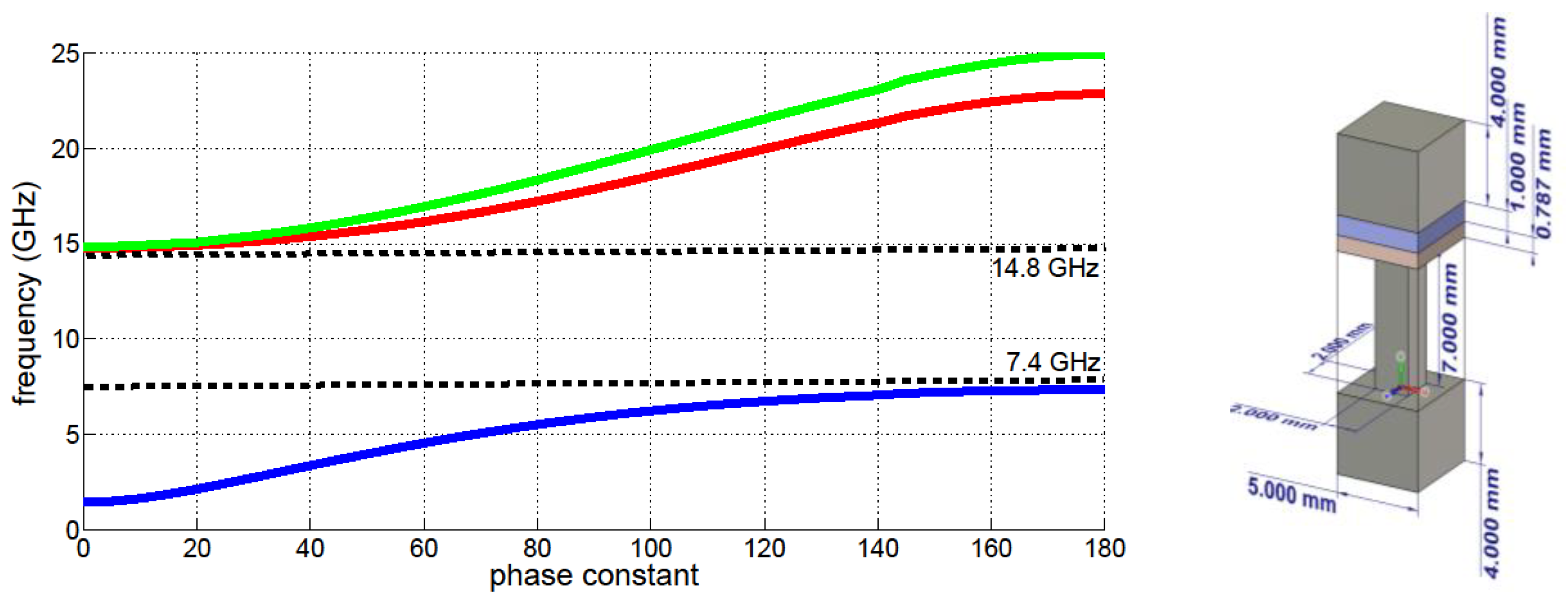
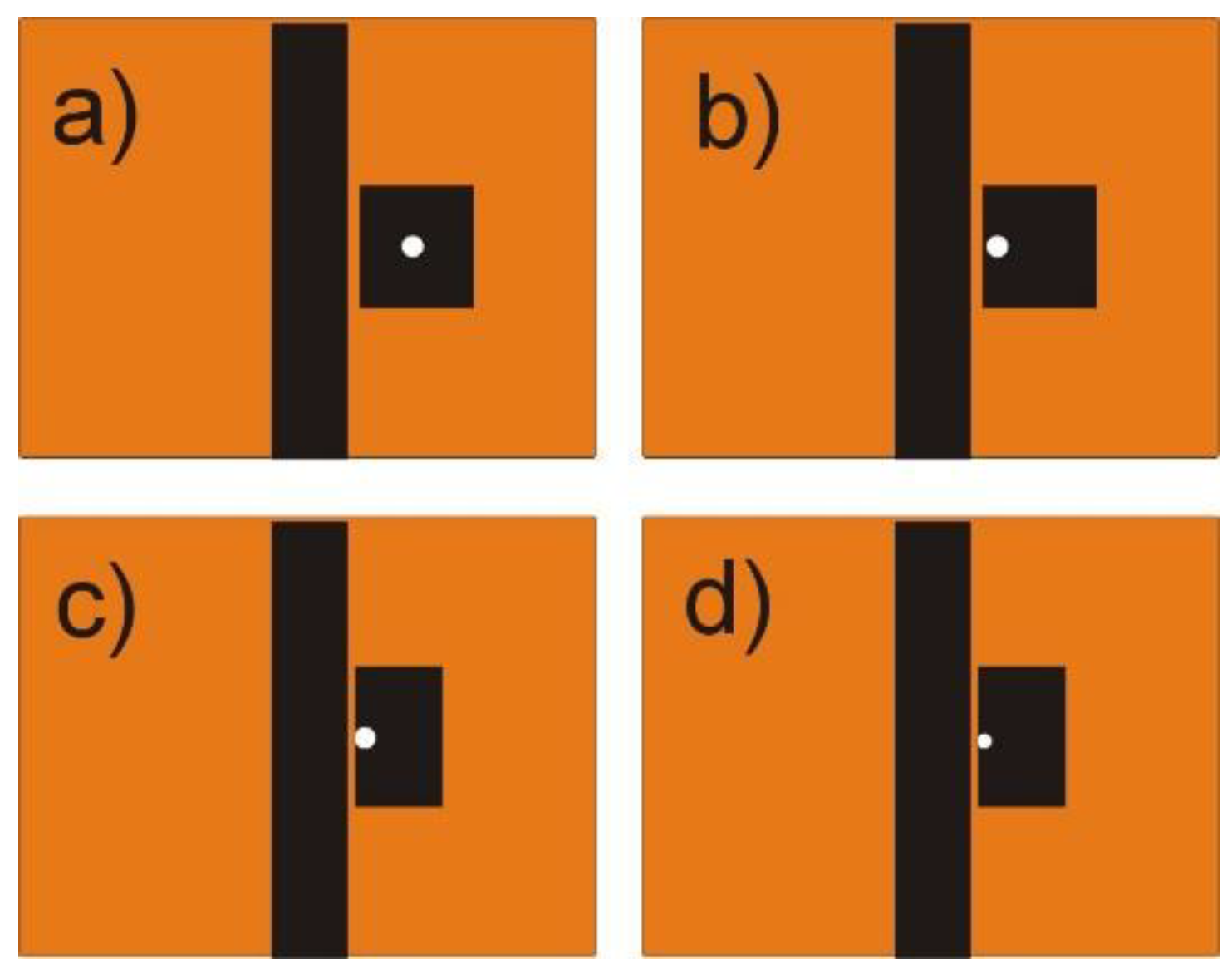

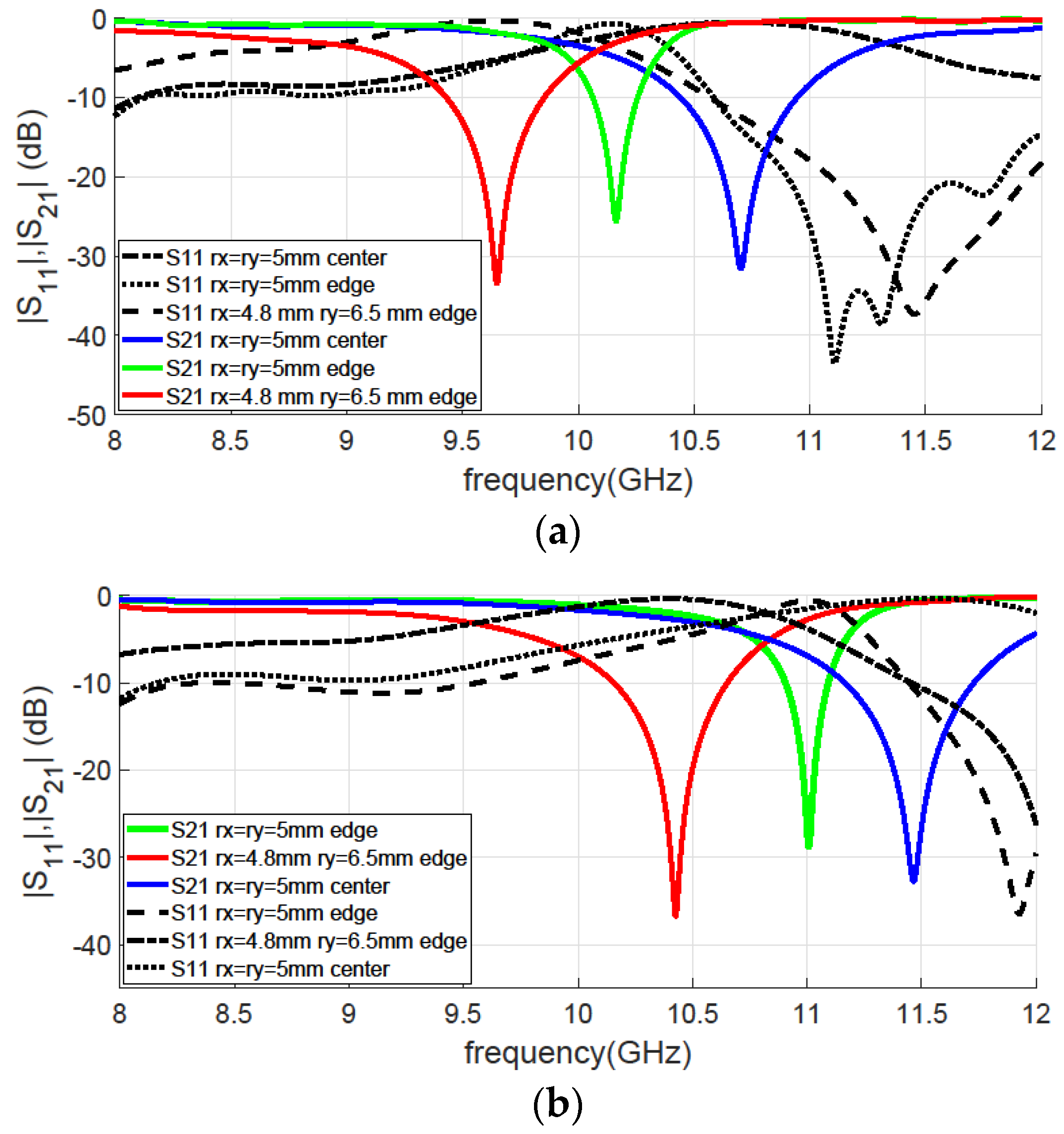
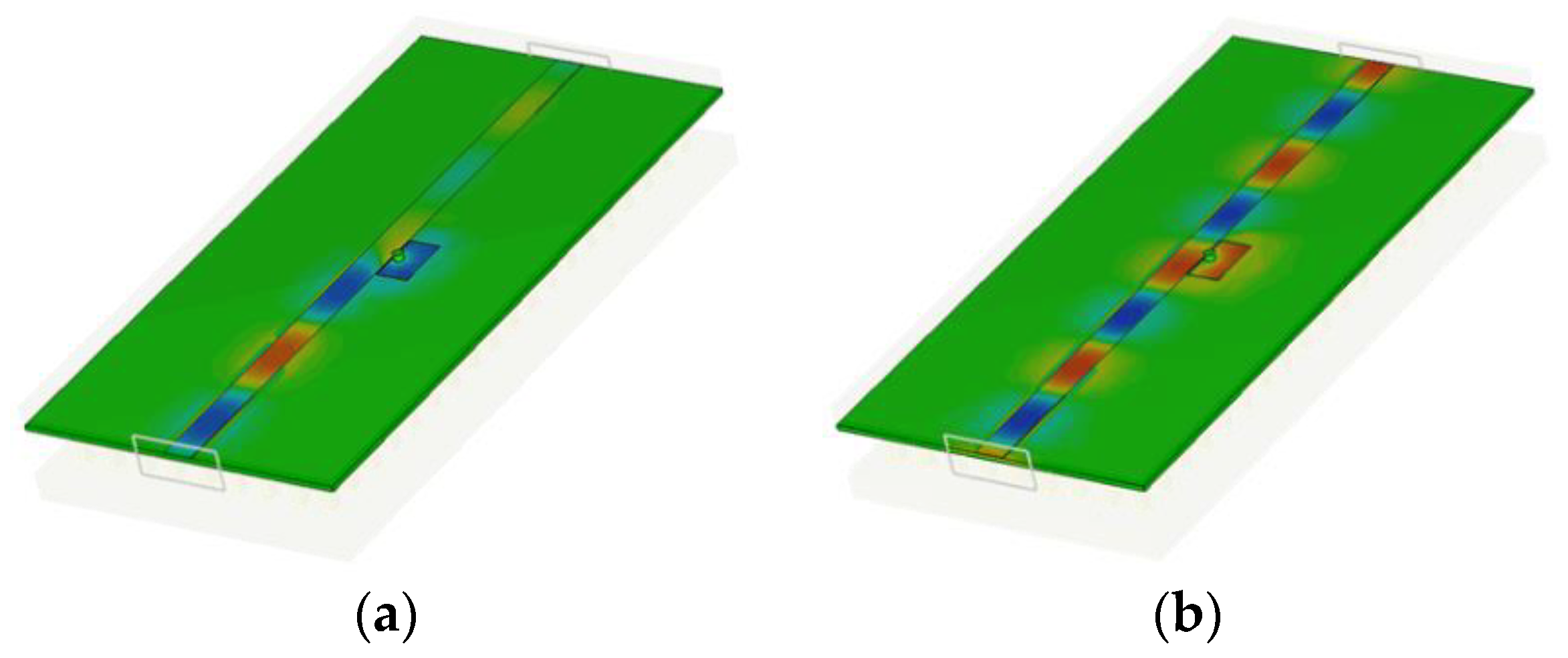


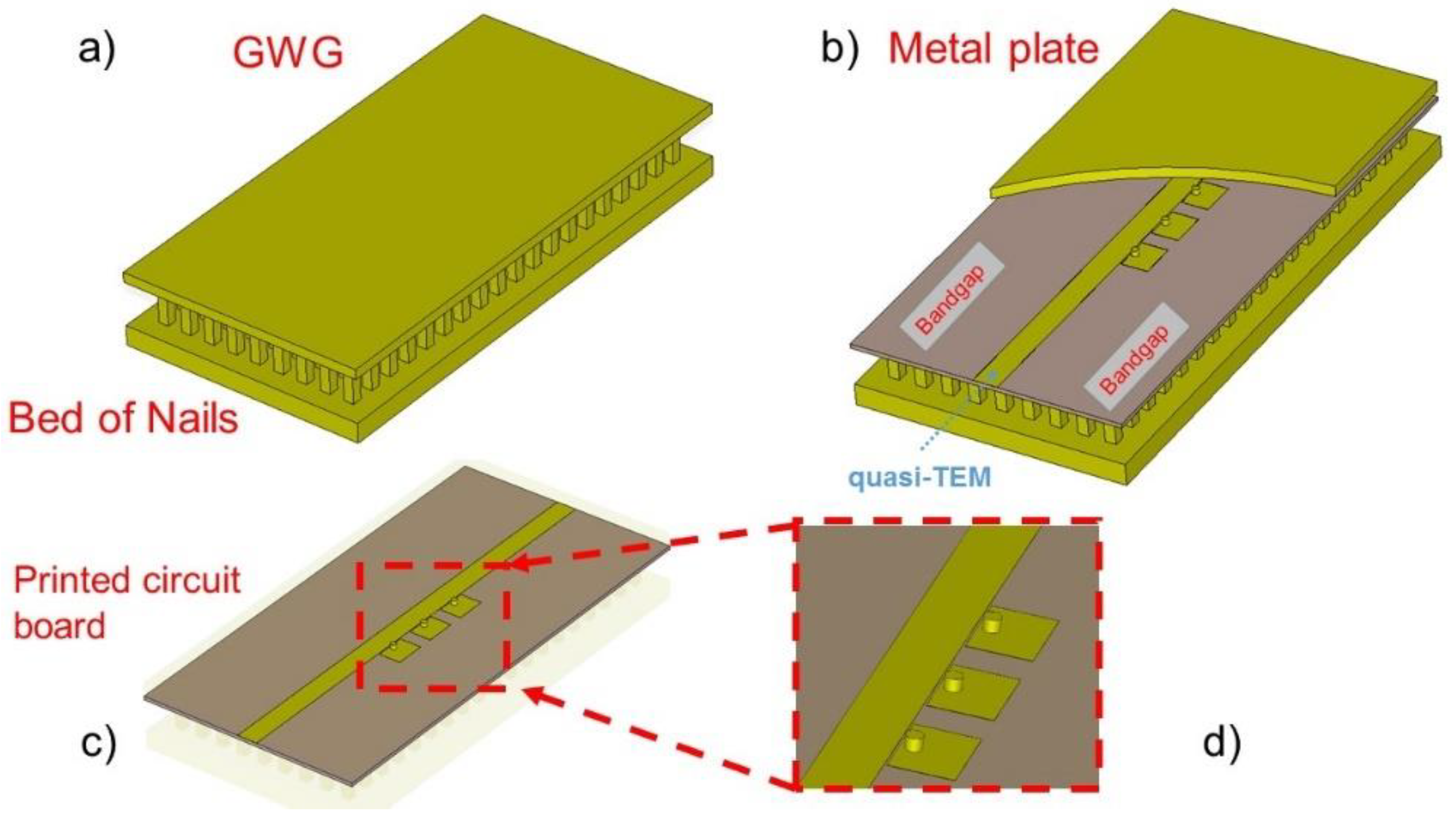
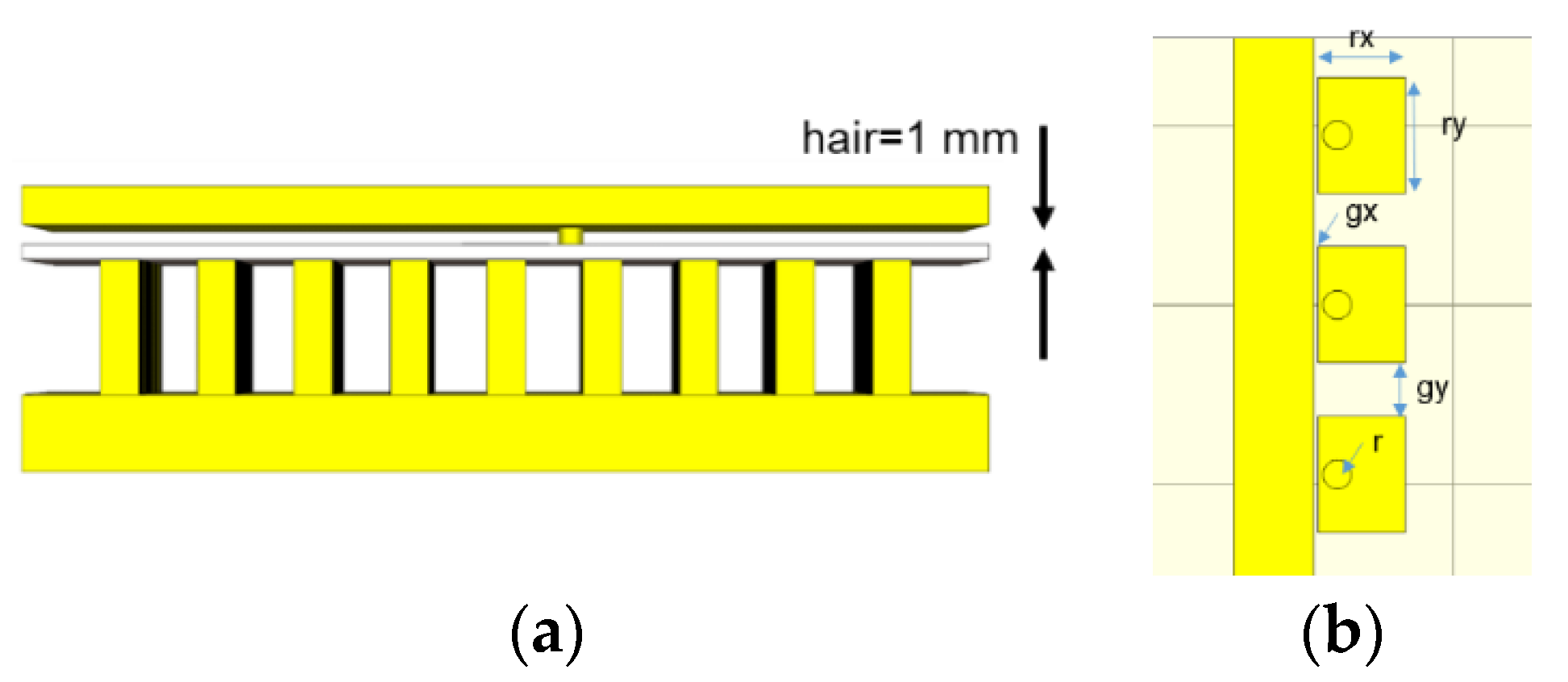
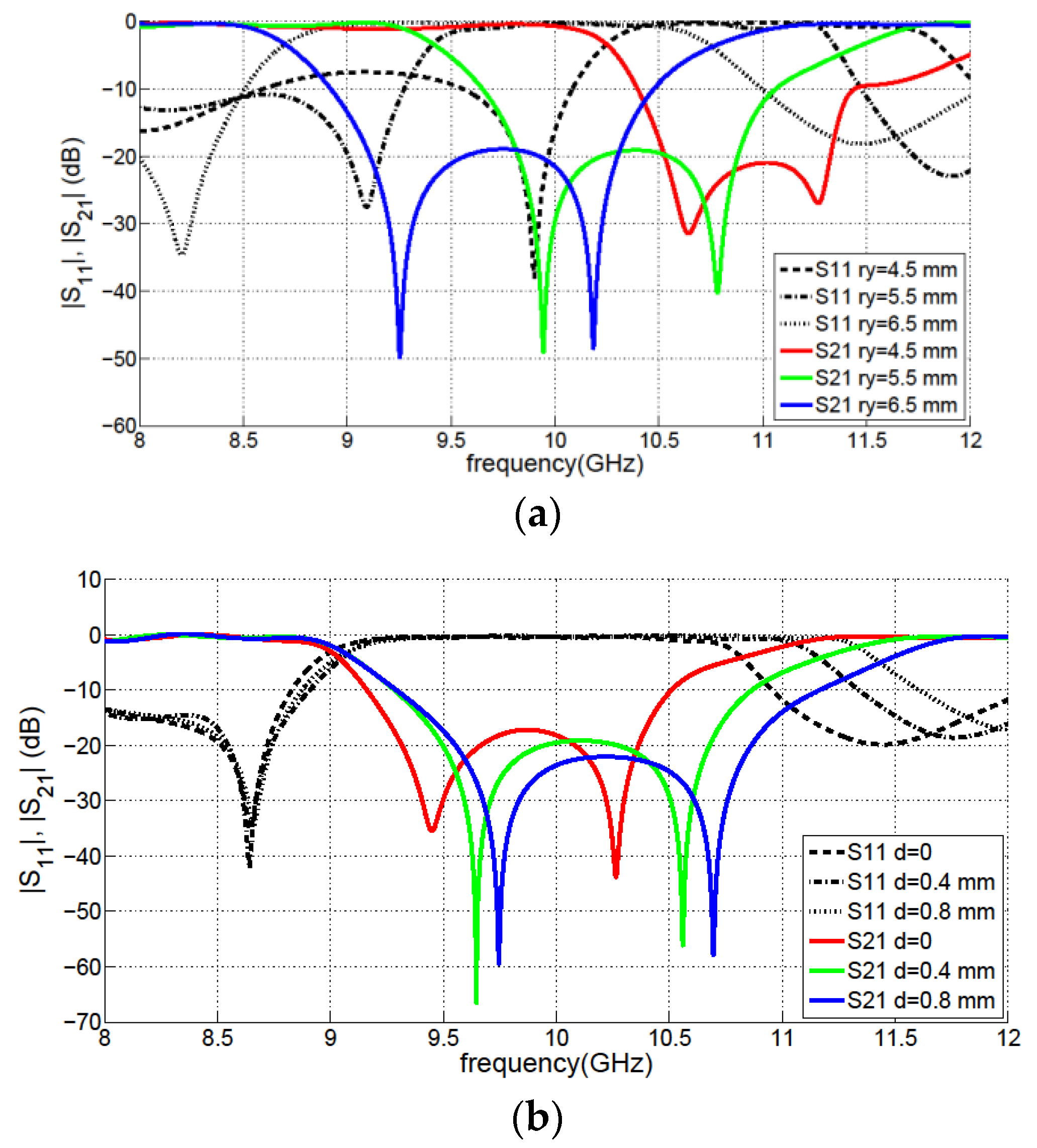
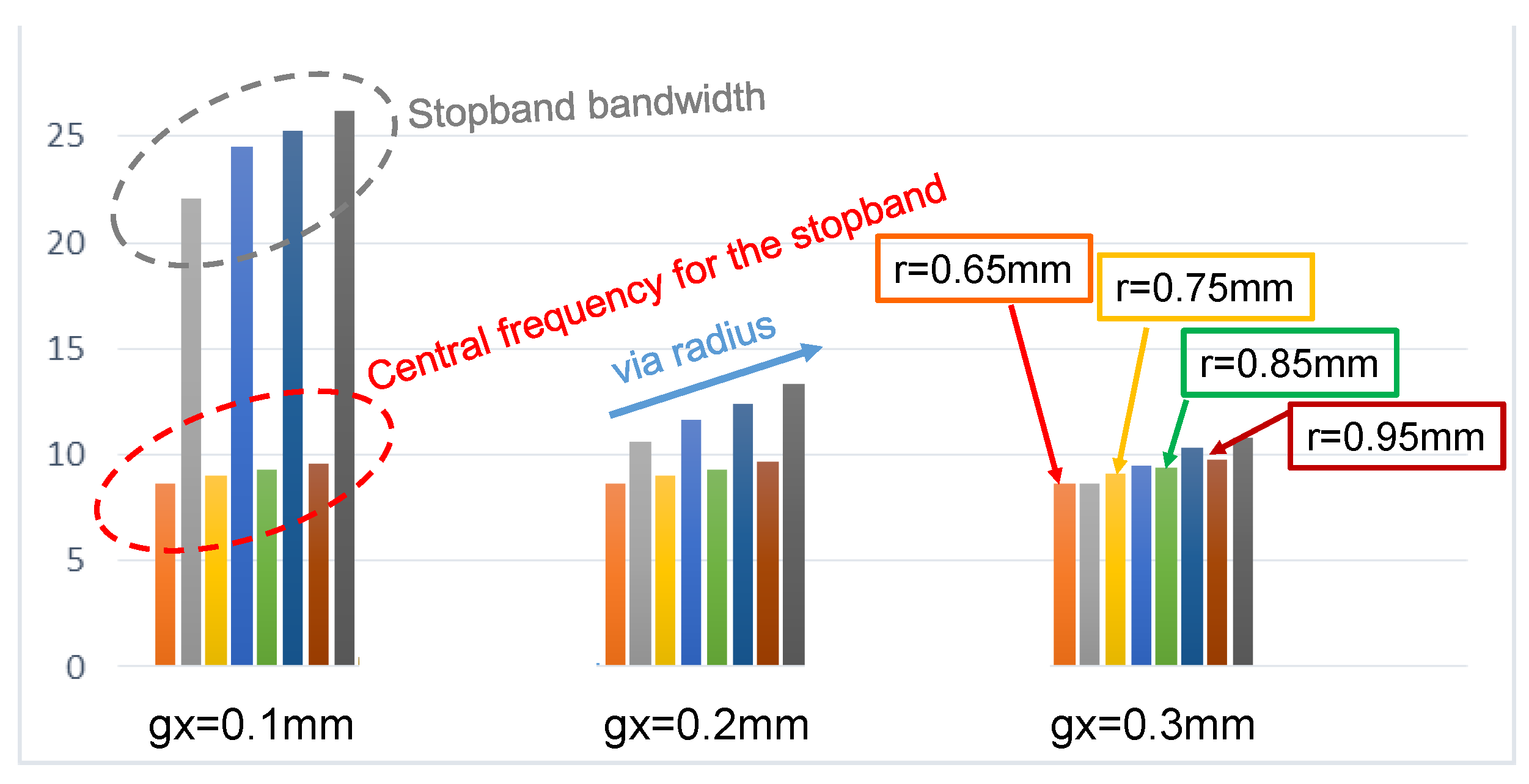

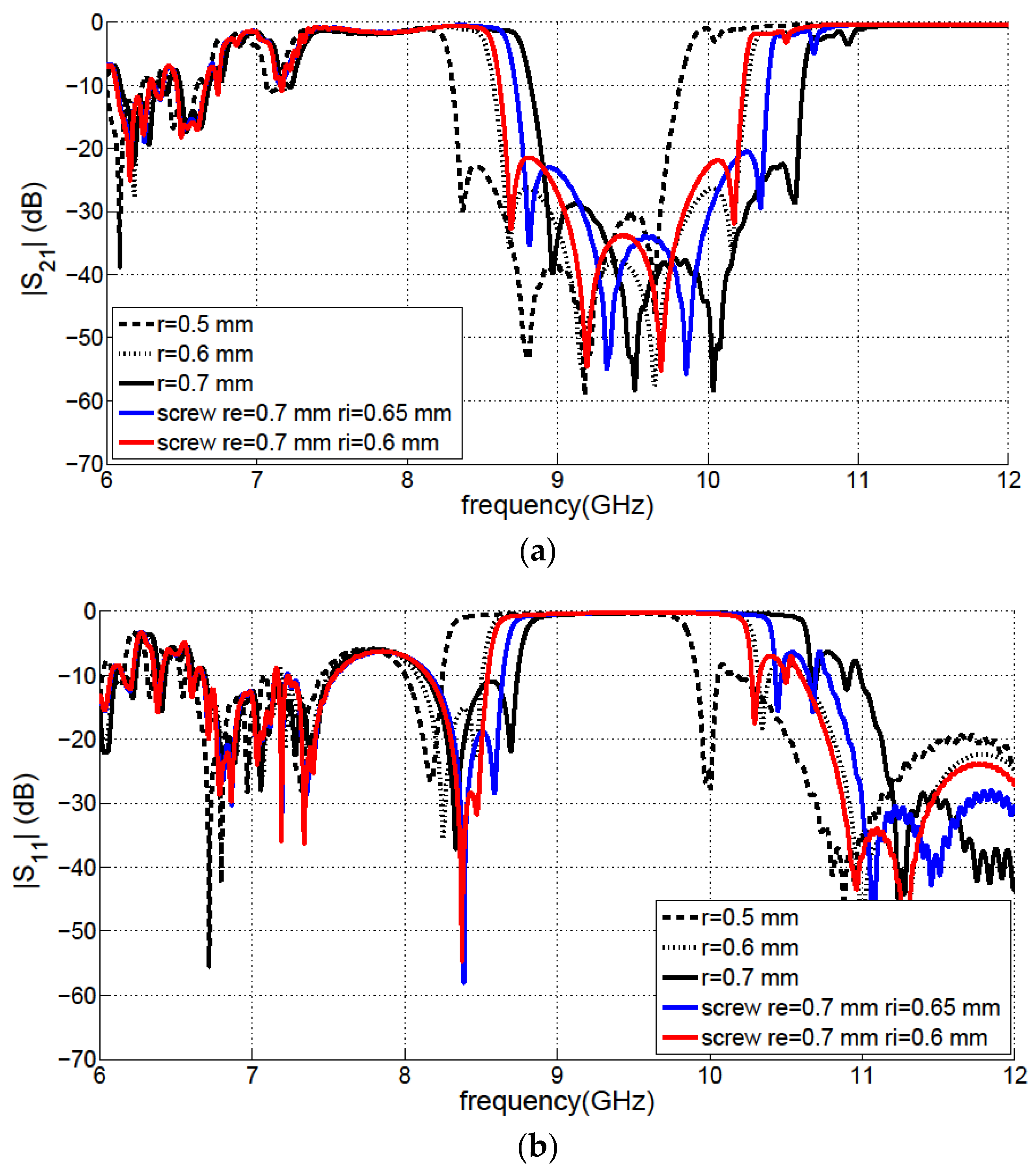
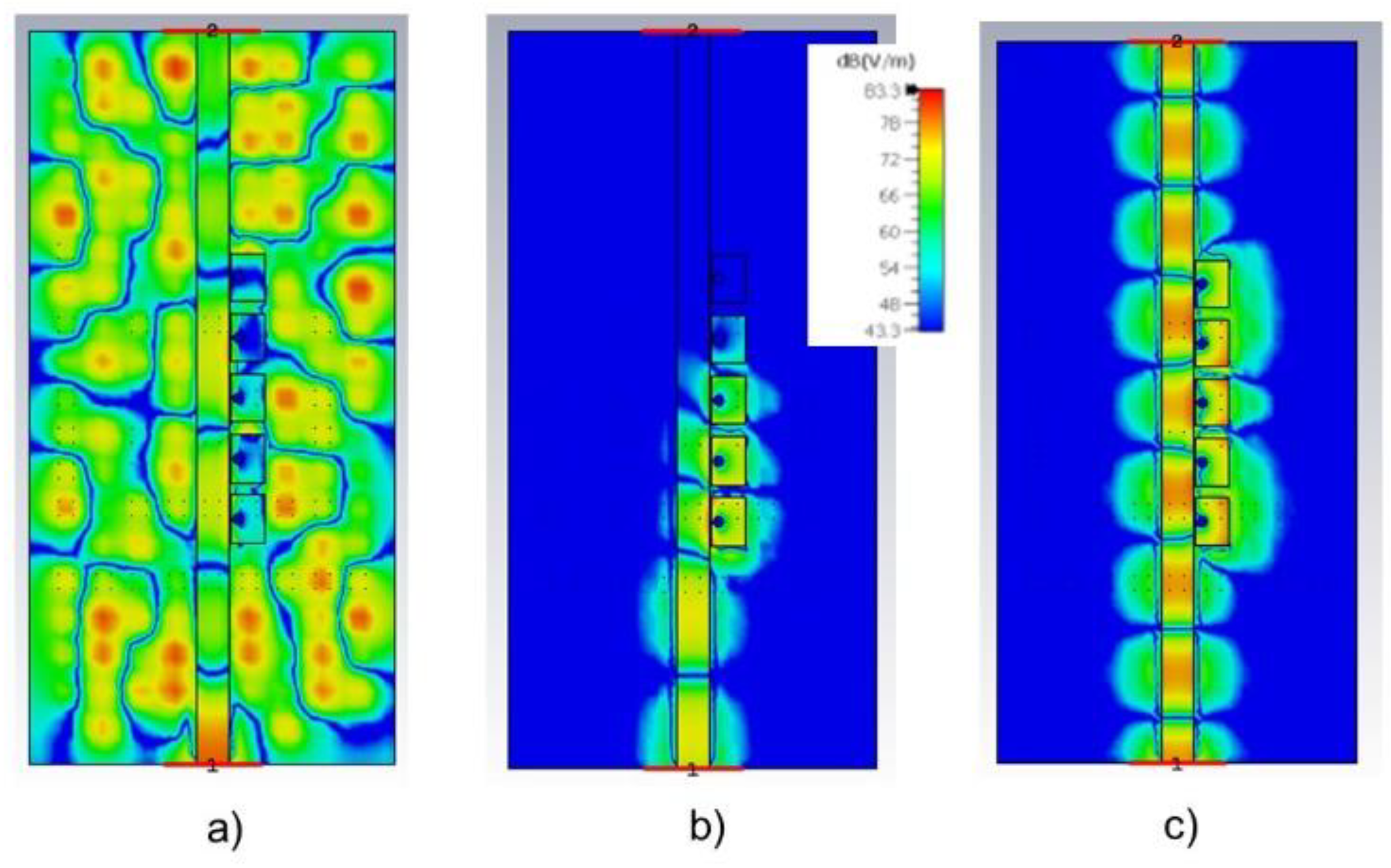
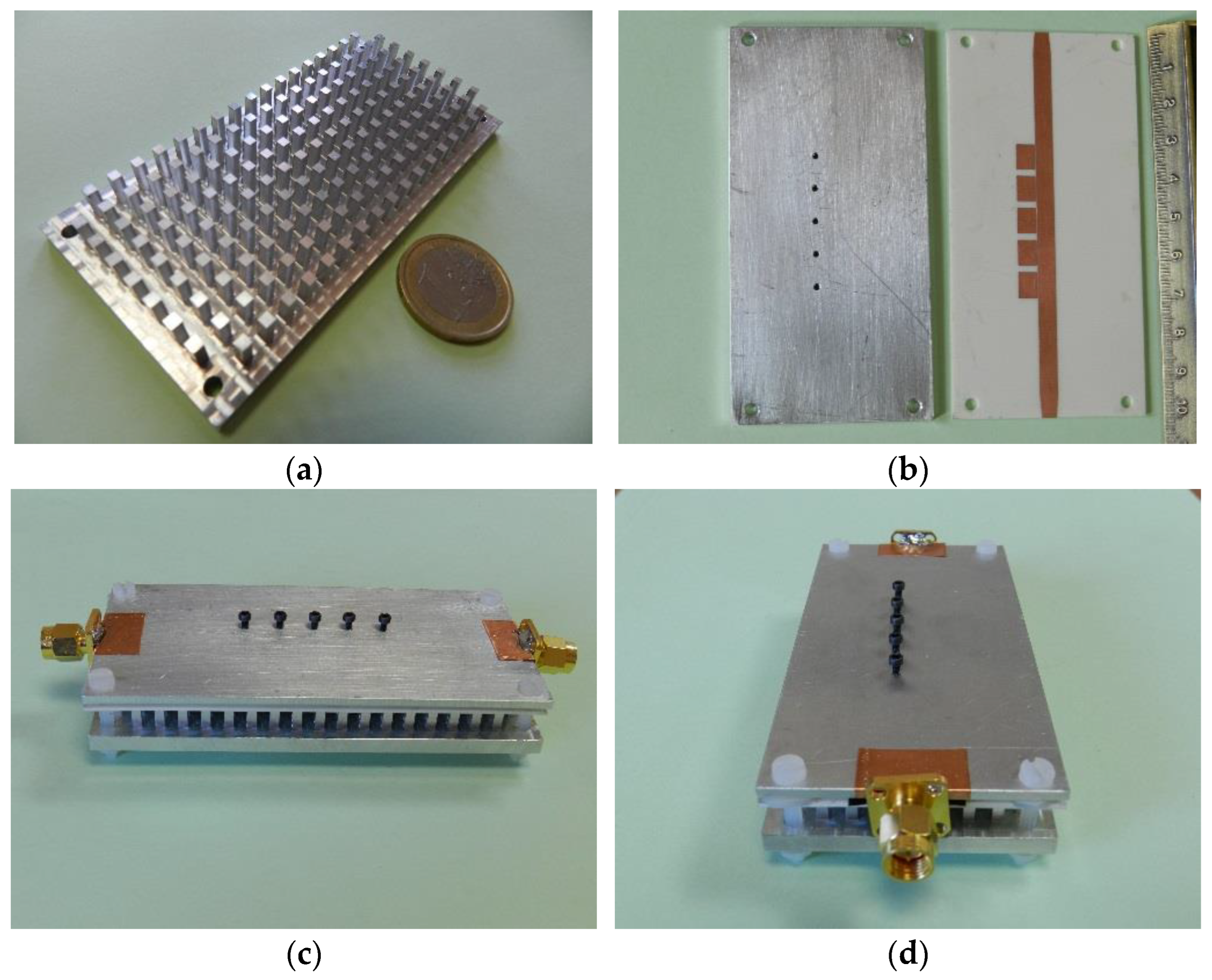
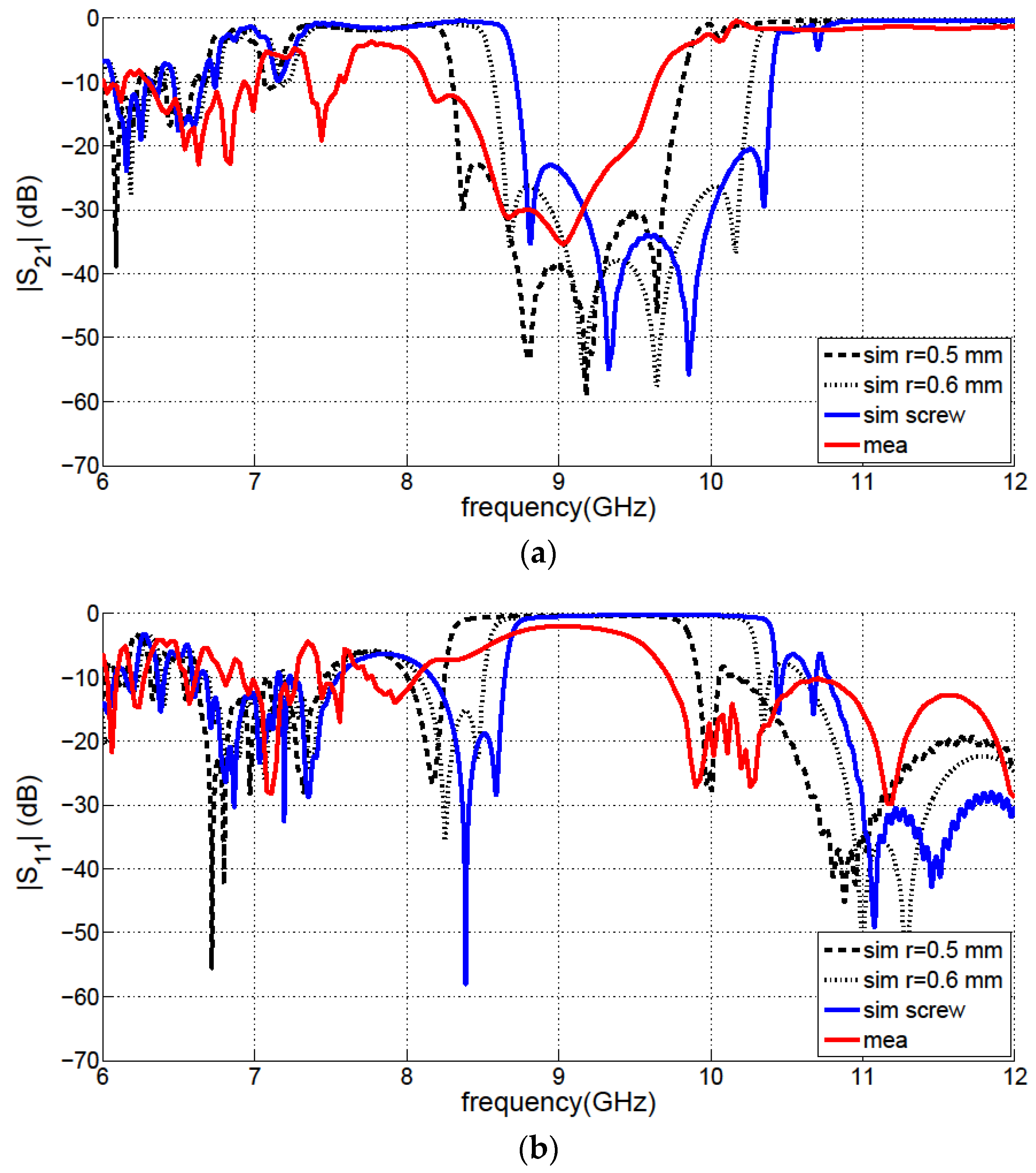
| Ref. | Tech. | Func. | Freq (GHz) | BW (%) | nº Cells/ Order | Rejec. (dB) | I. Loss/R. Loss | Size (λ × λ) |
|---|---|---|---|---|---|---|---|---|
| [24] | EBG | Stopband | 10 | 56.78 (−25 dB) | 6 | −42 | Ripple level 1.56 lower and 4.68 upper bands/15 | 0.12 × 2.64 |
| [25] | EBG | Stopband | 7 | 93.7 | 5 | −42 | 0.8 (lower band)/13 | 0.32 × 1.18 |
| [26] | EBG | Stopband /lowpass | 6.5 (cutoff) | - | 6 | −30 | 0.8 (lower band)/20 | 0.39 × 0.91 |
| [39] | SIW | Passband | 9.23−14.05 | 2.5–5.6 | 2 | - | 2.9–2.7 | 1.27 × 2.7 |
| [15] | G-GW | Passband | 11.87 | 3.88 | 6 | - | 0.7/18 | 2.31 (length) |
| [16] | IMR-GW | Passband | 13.57 | 3.76 | 4 | - | 1.41/15.1 | 1.38 × 3.18 |
| [17] | PR-GW | Passband | 31 | 3 | 4 | - | 2.3 | 0.4 × 0.4 |
| [18] | IMR-GW | Passband | 13.17–19.3 | 2–2.4 | 2 | 1.6–1.8/10 | 0.61 × 1.48 | |
| [20] | IM-GW-SRR | Passband | 28 | 4 | 2 | - | 1.1 | 0.47 × 1.14 |
| [20] | IM-GW-end | Passband | 28 | 11.7 | 4 | - | 1.45 | 1.7 (length) |
| This work | IM-GW-EBG | Stopband | 9 | 10.6 | 5 | −35.4 | 1.5/15 | 0.14 × 1.18 |
Publisher’s Note: MDPI stays neutral with regard to jurisdictional claims in published maps and institutional affiliations. |
© 2022 by the author. Licensee MDPI, Basel, Switzerland. This article is an open access article distributed under the terms and conditions of the Creative Commons Attribution (CC BY) license (https://creativecommons.org/licenses/by/4.0/).
Share and Cite
Inclán-Sánchez, L. Inverted Microstrip Gap Waveguide Coplanar EBG Filter for Antenna Applications. Electronics 2022, 11, 2951. https://doi.org/10.3390/electronics11182951
Inclán-Sánchez L. Inverted Microstrip Gap Waveguide Coplanar EBG Filter for Antenna Applications. Electronics. 2022; 11(18):2951. https://doi.org/10.3390/electronics11182951
Chicago/Turabian StyleInclán-Sánchez, Luis. 2022. "Inverted Microstrip Gap Waveguide Coplanar EBG Filter for Antenna Applications" Electronics 11, no. 18: 2951. https://doi.org/10.3390/electronics11182951







